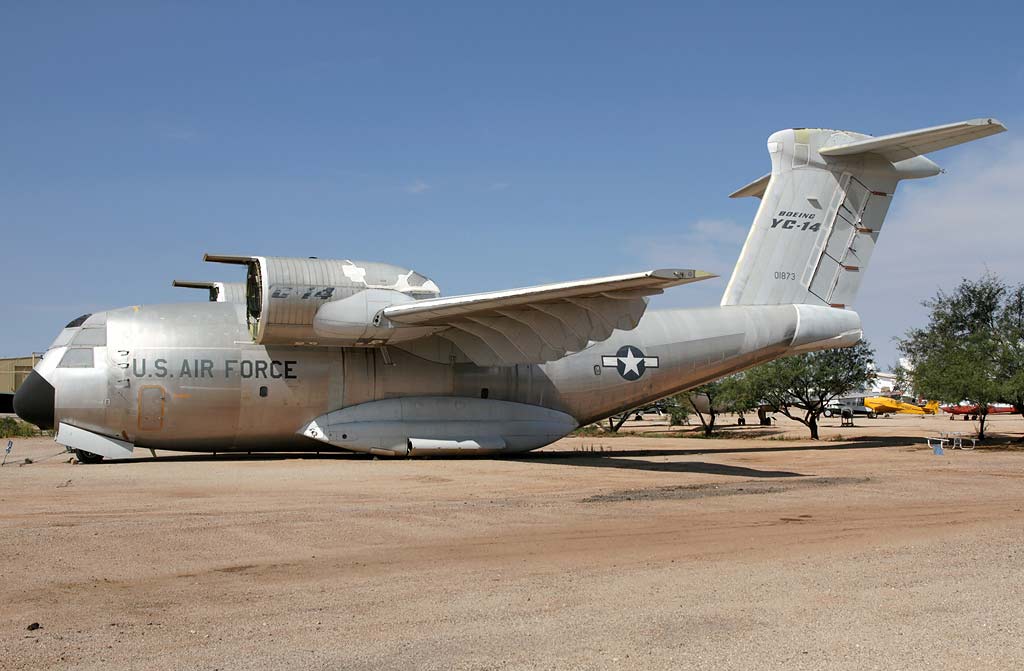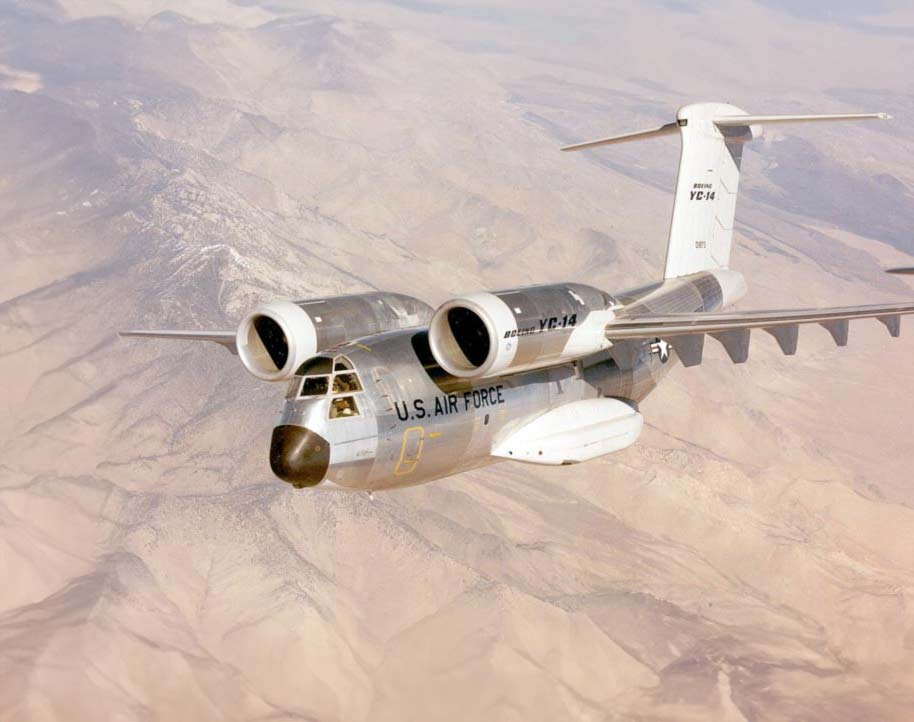Boeing YC-14: Advanced short takeoff/landing, military transport prototype.
In brief
The Boeing YC-14 was a pioneering military transport aircraft designed to enhance tactical airlift capabilities with its short takeoff and landing (STOL) performance. Powered by two General Electric F103 turbofan engines, the aircraft was notable for its use of the upper-surface blowing (USB) concept, where engine exhaust was blown over the wings to enhance lift at lower speeds. This enabled operations from short, unprepared runways. With a payload capacity of approximately 40,000 pounds and a maximum speed of 507 mph, the YC-14 was developed during the 1970s to meet a U.S. Air Force requirement for a modernized transport aircraft but was not adopted into full production.

History of the Development of the Boeing YC-14
In the early 1970s, the U.S. Air Force initiated a program to develop a new generation of tactical transport aircraft that could operate from short or damaged runways, a capability increasingly deemed vital in the context of Cold War hostilities and rapid deployment needs. This requirement led to the Advanced Medium STOL Transport (AMST) competition, launched to replace the aging C-130 Hercules and other similar aircraft.
Boeing and McDonnell Douglas were the main competitors, with Boeing presenting the YC-14 and McDonnell Douglas the YC-15. The program was a response to the military’s need for an aircraft capable of direct delivery of troops and cargo to forward areas, potentially close to combat zones, without requiring long, prepared runways. The Boeing YC-14 first flew on August 9, 1976, showcasing its advanced aerodynamic design and performance characteristics that aligned with the Air Force’s strategic mobility goals.
The development of the YC-14 occurred during a period when the strategic importance of air mobility and versatile airlift capabilities was increasingly recognized. It was designed not just to meet current logistical challenges but also to integrate emerging technologies that could set new standards for future military transport.
Design of the Boeing YC-14
The Boeing YC-14’s design was revolutionary for its time, primarily due to the implementation of the upper-surface blowing (USB) concept. This design utilized high-bypass turbofan engines mounted forward of and above the wing, allowing the engine exhaust to blow across the wing’s upper surface, significantly enhancing lift during low-speed operations. This feature was critical for STOL capabilities, allowing the YC-14 to operate from runways as short as 2,000 feet.
The aircraft measured about 131 feet in length with a wingspan of 131 feet. The high-mounted wings and the location of the engines were selected to minimize the risk of foreign object damage during operations from rough, unprepared runways. The YC-14 could carry a payload of up to 40,000 pounds and was designed with a large, rear-loading cargo bay that could accommodate a wide range of military logistics needs, from vehicles to troop transports and cargo pallets.
While the YC-14 was innovative, its reliance on the then-novel USB technology also presented challenges. The complexity of the technology and the cost associated with its development and potential production were significant. Moreover, the aircraft’s performance, while excellent in STOL scenarios, involved trade-offs in terms of range and speed compared to more traditional designs.
Performance of the Boeing YC-14
The YC-14 was equipped with two General Electric F103 turbofan engines, each providing substantial thrust that was key to the aircraft’s STOL capabilities. The aircraft had a maximum speed of 507 mph and a range of approximately 2,500 miles without refueling, with a service ceiling of 45,000 feet.
In comparison to its contemporaries and potential replacements for the C-130, the YC-14 demonstrated superior capability in short takeoff and landing environments, crucial for tactical scenarios. Its ability to quickly load and unload large volumes of cargo or personnel and operate from near-frontline positions offered significant tactical advantages. However, the operational cost, complexity of maintenance, and fuel efficiency were concerns that compared less favorably against more conventional aircraft, which affected its competitiveness in the selection process.
Variants of the Boeing YC-14
The YC-14 did not progress beyond the prototype stage; thus, there were no production variants of this aircraft. The two prototypes built were extensively used in test programs to evaluate the STOL capabilities and the practicality of the USB technology in military operations.

Military Use and Combat of the Boeing YC-14
The Boeing YC-14 was never deployed in combat or entered into regular military service as it remained a technology demonstrator within the AMST program. Its primary role was in the testing and evaluation phase to assess the feasibility of using USB technology for future military transport needs. After the termination of the AMST program in the late 1970s, due to budget constraints and shifts in military priorities, the YC-14 prototypes were retired. They provided valuable data that influenced future aircraft design and helped refine the concepts that are utilized in later military and civilian STOL aircraft designs.
The Boeing YC-14 was a significant step forward in the exploration of advanced STOL technologies for military transport aircraft. Despite its limited production run, the insights gained from the YC-14 program have had lasting impacts on the design and development of future transport aircraft, highlighting the importance of innovation in addressing tactical and logistical challenges in military operations. Its legacy is reflected in the continued pursuit of versatile and efficient aircraft capable of operating in diverse and challenging environments.
Back to the experimental aircraft section.